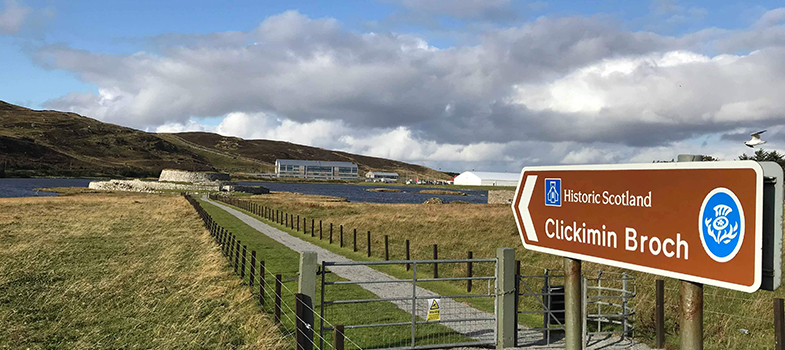Example 6
Jenny Geddes and the riot at St Giles Cathedral, Edinburgh, 23rd July 1637, caused by the first attempt to use the Anglican Book of Liturgy during service.
King Charles I, who had come to Scotland in 1633, was keen to introduce Anglican-style church services across Scotland and had arranged a Commission to draw up an Anglican prayer book suitable for Scotland. These developments were met with widespread opposition as Scotland had its Episcopal Church, which was related to the Anglican Church but much more puritan in doctrine and practice.
In 1637, an Edinburgh printer had produced such an Anglican prayer book and it was tried out at St Giles Cathedral, Edinburgh, on 23rd July 1637 for the first time, which led to the events recounted in the two extracts below.
The first (a) is taken from Thomas Carlyle’s commentary in his edition of Oliver Cromwell’s letters and speeches. It contains the words reputedly used by Jenny Geddes, an Edinburgh vegetable-stall keeper. Although there is no firm proof that she actually existed, she is one of the most famous figures in Scottish popular history. Carlyle’s version of events is written from a 19th-century perspective.
The second extract (b), ‘The Stonyfeild Saboth Day’, is a contemporary account of the same event which exists in a manuscript in the Advocates’ Library in Edinburgh.
(a)
‘Let us read the Collect of the Day,’ said the Pretended-Bishop from amid his tippets; – ‘De’il colic the wame of thee!’ answered Jenny, hurling her stool at his head. ‘Thou foul thief, wilt thou say mass at my lug?’ I thought we had got done with the mass some time ago; – and here it is again! ‘A Pape, a Pape!’ cried others: ‘Stane him!’ - In fact the service could not go on at all. This passed in St Giles’s Kirk, Edinburgh, on Sunday 23rd July, 1637.
(b)
No les worthie of observatioun is that renouned Cristian valyancie [valour] of ane other godly woman at this same seasone: for when scho hard a young man behind hir sounding furth amen to that new composed church comedie (God’s service or worschippe it deserves not to be called) which then wes impudentlie acted in publict sicht of the congregatioun, scho quicklie turnd hir about and efter scho haid warmed both his cheikis with the weght of hir handis, scho thus schott against him the thunderbolt of hir zeale ‘Fals theiff (said scho) is thair no other pairt of the churche to sing mess in but thow most sing it at my lug?’ The young man being dasched at such a suddant rencounter, gave place to silence.
Activity 7
Before you move on to the final part of this unit, you may wish to consider some questions about the material you have read and researched so far.
What are the differences between Scots and English in the texts you have looked at in this section?
Can you find examples, in any of the six texts in section 3, of differences which are mainly determined by:
- spelling?
- pronunciation?
- vocabulary?
Are there other differences, which are not simply linguistic?
Is it possible to identify ‘attitude’ or ‘mood’ as features of Scots or English?
What is the effect on the reader or listener of Scots words and phrases being contained within predominantly English texts? Why do you think does this not happen the other way around, i.e. English words and phrases being contained within predominantly Scots texts?
14.3 Scots language in narratives of historical events
